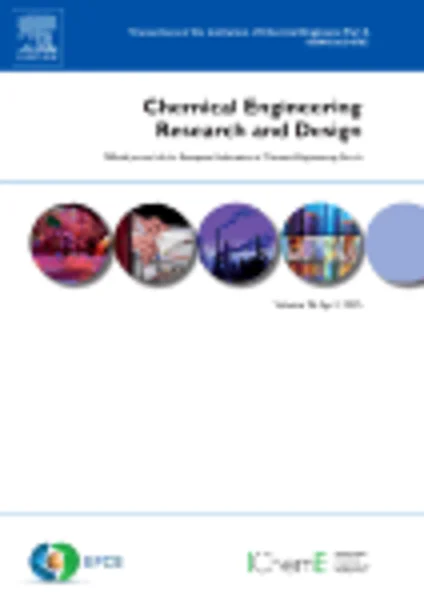-
cure modelling of polyester thermosets in a glass mould
جزئیات بیشتر مقاله- تاریخ ارائه: 1392/07/24
- تاریخ انتشار در تی پی بین: 1392/07/24
- تعداد بازدید: 722
- تعداد پرسش و پاسخ ها: 0
- شماره تماس دبیرخانه رویداد: -
the curing of unsaturated polyester was studied experimentally and using a model of the process. the kinetic parameters were calculated from the heat flow–time curves obtained by differential scanning calorimetry (mettler toledo dsc 823), operating in a non-isothermal mode. the temperature–time histories were studied in a cylindrical glass mould. a potential use of glass as a mould for polymer curing is found in the production of optical sensors. here, glass was selected as a mould material because it is uv transparent, chemically inert and easy to clean. the thermal properties of glass moulds coupled with the intrinsic curing kinetics are of a significant interest in such investigations. taking into account the heat transferred by the convection from the air to the mould surface and the conduction through the mould wall and resin, as well as the kinetics of the heat generated in the cure reaction, a numerical model has been constructed. the contributions to the rise in temperature from the heat conduction and chemical reaction are different in different parts of the composite, which can explain the temperature–time histories. the introduction of a carbonate based filler reduced the amount of heat released in the composite and, as a result, lowered the temperatures through the resin. a good agreement between experimental data and the predicted mathematical model of the curing process in the mould has been observed.
مقالات جدیدترین رویدادها
-
استفاده از تحلیل اهمیت-عملکرد در ارائه الگوی مدیریت خلاقیت سازمانی و ارائه راهکار جهت بهبود
-
بررسی تاثیر ارزش وجوه نقد مازاد بر ساختار سرمایه شرکت های پذیرفته شده در بورس اوراق بهادار تهران
-
بررسی تأثیر سطح افشای ریسک بر قرارداد بدهی شرکت های پذیرفته شده در بورس اوراق بهادار تهران
-
بررسی تأثیر رتبه بندی اعتباری مبتنی بر مدل امتیاز بازار نوظهور بر نقد شوندگی سهام با تأکید بر خصوصی سازی شرکت ها
-
تأثیر آمیخته بازاریابی پوشاک ایرانی بر تصویر ذهنی مشتری پوشاک ایرانی (هاکوپیان)
-
ارزیابی تأثیر فرکانس ورودی بر شدت روانگرایی بستر موج شکن مرکب با استفاده از آزمایشات مدل میزلرزه 1g
-
بررسی مطالعات انجام شده در حوزه فراموشی سازمانی در ایران
-
بررسی اندرکنش خاک و دیوار انعطاف پذیر ساحلی تحت بارگذاری زلزله
-
بررسی میزان افسردگی دانشجویان دانشکده پرستاری و مامایی دانشگاه علوم پزشکی زنجان، 1379
-
حذف کدورت در شیوه های متداول و نوین تصفیه آب شرب
مقالات جدیدترین ژورنال ها
-
مدیریت و بررسی افسردگی دانش آموزان دختر مقطع متوسطه دوم در دروان کرونا در شهرستان دزفول
-
مدیریت و بررسی خرد سیاسی در اندیشه ی فردوسی در ادب ایران
-
واکاوی و مدیریت توصیفی قلمدان(جاکلیدی)ضریح در موزه آستان قدس رضوی
-
بررسی تاثیر خلاقیت، دانش و انگیزه کارکنان بر پیشنهادات نوآورانه کارکنان ( مورد مطالعه: هتل های 3 و 4 ستاره استان کرمان)
-
بررسی تاثیر کیفیت سیستم های اطلاعاتی بر تصمیم گیری موفق در شرکتهای تولیدی استان اصفهان (مورد مطالعه: مدیران شرکتهای تولیدی استان اصفهان)
-
بررسی و تحلیل اسناد مالکیت معارض در نظام قضایی
-
واکاوی آراء مبتنی بر جبران خسارت در پرتو حقوق بین الملل محیط زیست
-
بررسی جایگاه بانوان در اشعار عصر بیداری، مطالعه موردی سید اشرف الدین گیلانی «نسیم شمال»
-
بررسی عوامل ورزش های بومی محلی در توسعه گردشگری ورزشی (مطالعه موردی: استان یزد)
-
the relationship between working capital management and criterions for value-based performance of the companies listed in tehran stock exchange




سوال خود را در مورد این مقاله مطرح نمایید :